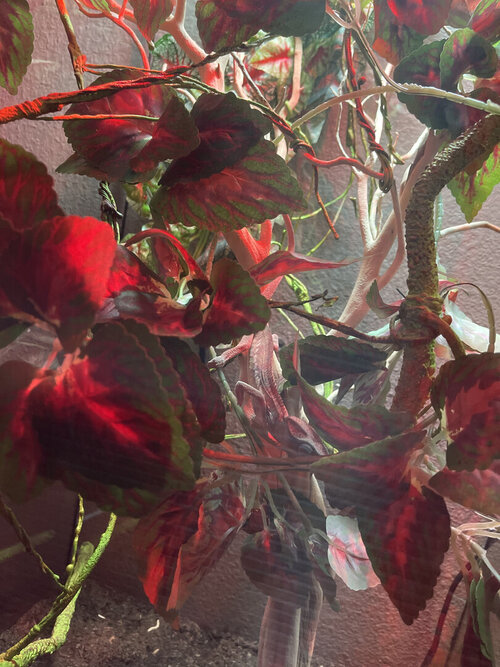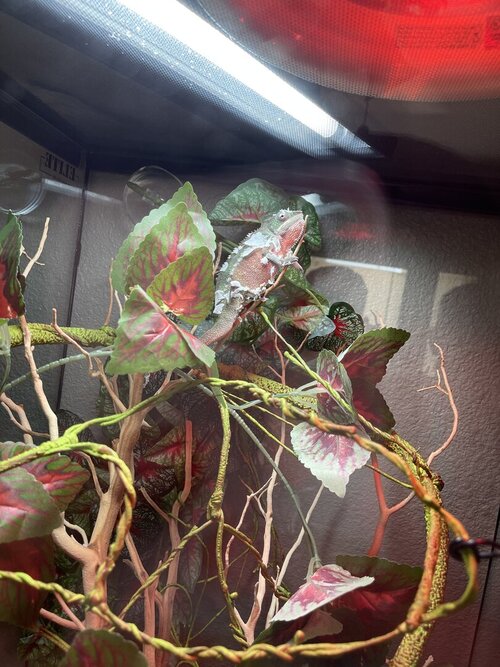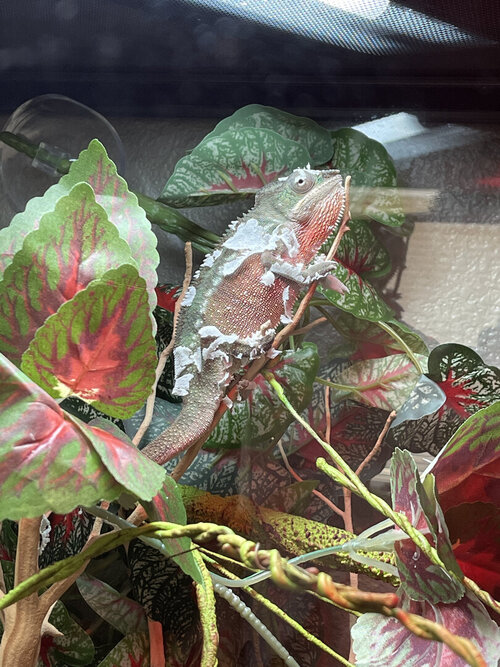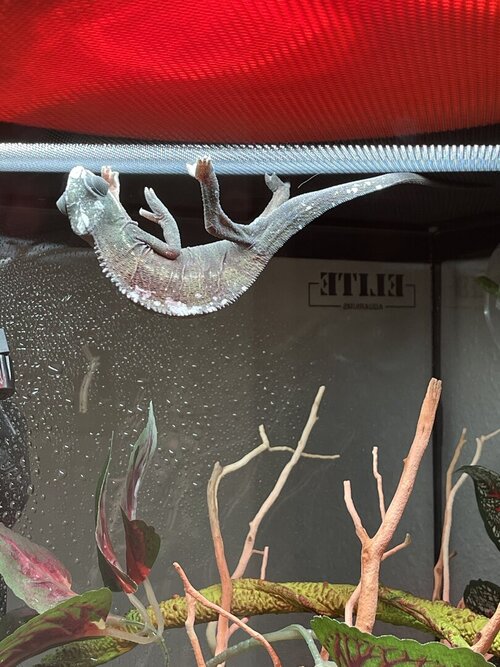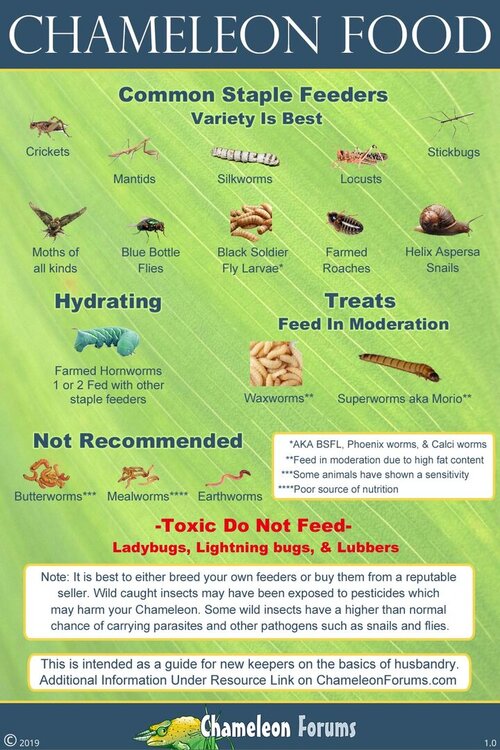Rex_The_Chameleon
New Member
Chameleon Info:
Cage Info:
Current Problem - Hello, so this is my first chameleon as well as reptile ever. I need some help on how to my humidity levels up, I keep reading that I should only be spraying twice or three times a day but I’m having to spray every hour to keep the humidity percentage above 50%. Another thing I need some assistance on, is if someone can please explain gut loading to me as well as how to do it for my chameleon. Another question I have is if the guy from the pet store was right? By telling me that all I need is the Repashy calcium plus for his food?
Also if is it safe for him to walk around in my 3ft x 8ft wide raised garden bed, it currently has organic soil the plants in it are mint, bell pepper, rosemary & strawberry with a couple baby trees growing from seed, also I would like to keep live plants in his terrarium and would like to know which precautions to take and which steps to take in order to make it happen safely for him?
Sorry for all the questions, I want to make sure he has a happy, healthy life and im new to the whole reptile world.
Please help!

- Your Chameleon - The species, sex, and age of your chameleon. How long has it been in your care? I have a red body blue bar ambilobe panther chameleon, he is a male. He’s about 3 1/2 months old and I have had him for 5 days.
- Handling - How often do you handle your chameleon? I have only handled him once, and that was from the store bag into his new home, It was recommended from the pet store I bought him to wait one week before handling him.
- Feeding - What are you feeding your cham? What amount? What is the schedule? How are you gut-loading your feeders? I am currently feeding him crickets tossed in some repashy calcium plus, he eats once every morning around 11am-12pm and is eating 7-9 crickets. I am not gut loading yet
- Supplements - What brand and type of calcium and vitamin products are you dusting your feeders with and what is the schedule? The only thing I am using right now is the Repashy calcium plus, which is what the guy at the store told me was all I needed.
- Watering - What kind of watering technique do you use? How often and how long do you mist? Do you see your chameleon drinking? I currently have a zoo-Med mister (which sucks by the way and barely sprays a little spot with terrible mist) set to 45 seconds every hour, at the Moment I am using bottled water but I am looking into buying a Brita, I currently spray about once/twice an hour.
- Fecal Description - Has this chameleon ever been tested for parasites? I have only noticed one dropping so far in the past two days, I will be attaching a photo of the dropping. I am not too sure if he has been tested for parasites.
- History - I did not get much information about his previous history from the reptile store I bought him from
Cage Info:
- Cage Type - What are the dimensions? I currently have a hybrid enclosure of glass and screen with ventilation screens in the front of the glass enclosure as well as the top, I haven’t had a chance to measure the cage yet but I will attach a photo for you guys to see the size of it.
- Lighting - What brand, model, and types of lighting are you using? What is your daily lighting schedule? I currently have a flukers 8.5 inch dimmable lamp with a 75 watt red heat bulb, also a Reptisun T5 high output 14” hood with a 12” T5 5.0 UVB fluorescent light bulb. His day starts off around 8-9am and lights off around 8-9pm
- Temperature - What temp range have you created (cage floor to basking spot)? Lowest overnight temp? How do you measure these temps? At the moment I have the basking spot temperature ranging from 80-90 degrees F. Near cage floor my temperature is from 60-70 F. Temperatures fluctuate when misting is in progress and my lowest temperature at night is commonly low 60’s and might dip down to high 50’s when misting.
- Humidity - What are your humidity levels? How are you creating and maintaining these levels? What do you use to measure humidity? I try to maintain my humidity levels between 50%-60% but will occasionally hover over to the 70’s percentile, also I notice a few times out of the day it dropping to the 40% so I try and most it right away to get the humidity up. The way I maintain the humidity is by having an auto mister spray each hour for 45 seconds but that’s doesn’t do anything so I also hand spray it about once an hour and try to maintain those percentages. At the moment I’m using a reptile thermometer for the basking spot, a zoo Med thermometer for the cool side and a digital hygrometer purchased from PetSmart.
- Plants - Are you using live plants? If so, what kind? At the moment I only have fake plants in there but would love to do all real plants, I purchased my first Pothos but I still need to wash it before putting it in.
- Placement - Where is your cage located? Is it near any fans, air vents, or high traffic areas? At what height is the top of the cage relative to your room floor? My cage is currently sitting on top of my computer desk which about 4ft off the ground (like a normal computer desk) against the wall inside a room that does have a ceiling fan at the center of the room kept on medium but it’s also not such a big room, and the top of the cage sit a little over 6ft from the ground.
- Location - Where are you geographically located? I live in a very dry, hot city in the antelope valley.
Current Problem - Hello, so this is my first chameleon as well as reptile ever. I need some help on how to my humidity levels up, I keep reading that I should only be spraying twice or three times a day but I’m having to spray every hour to keep the humidity percentage above 50%. Another thing I need some assistance on, is if someone can please explain gut loading to me as well as how to do it for my chameleon. Another question I have is if the guy from the pet store was right? By telling me that all I need is the Repashy calcium plus for his food?
Also if is it safe for him to walk around in my 3ft x 8ft wide raised garden bed, it currently has organic soil the plants in it are mint, bell pepper, rosemary & strawberry with a couple baby trees growing from seed, also I would like to keep live plants in his terrarium and would like to know which precautions to take and which steps to take in order to make it happen safely for him?
Sorry for all the questions, I want to make sure he has a happy, healthy life and im new to the whole reptile world.
Please help!
Attachments
-
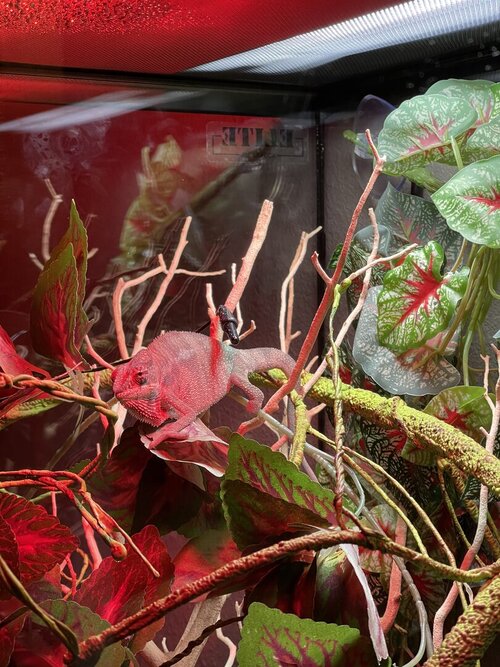 24CBBAD2-9D0B-4701-AD1E-58418DC40A75.jpeg241.8 KB · Views: 247
24CBBAD2-9D0B-4701-AD1E-58418DC40A75.jpeg241.8 KB · Views: 247 -
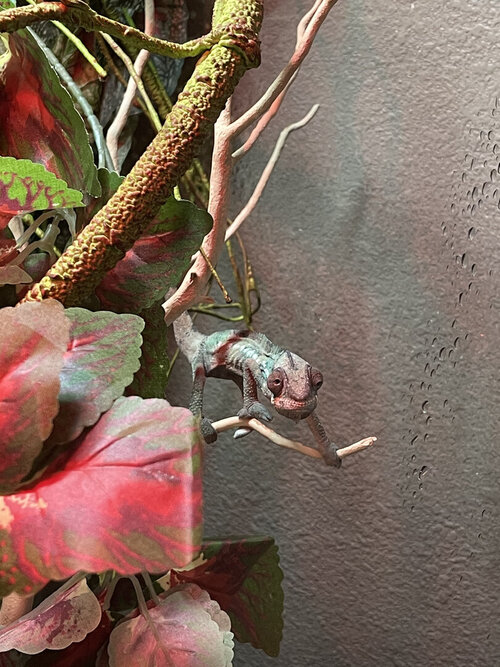 E50DC632-EEEF-48CF-90A2-341B0D079153.jpeg240.9 KB · Views: 241
E50DC632-EEEF-48CF-90A2-341B0D079153.jpeg240.9 KB · Views: 241 -
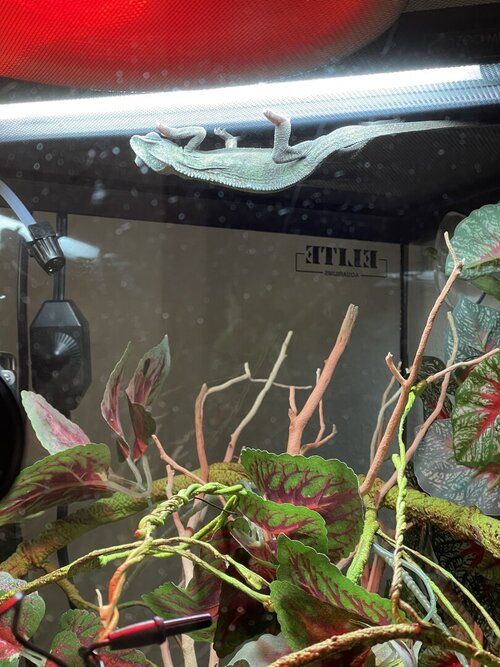 8D2D38D4-99CE-45E7-9674-7BA9BAF1A8F6.jpeg196.1 KB · Views: 245
8D2D38D4-99CE-45E7-9674-7BA9BAF1A8F6.jpeg196.1 KB · Views: 245 -
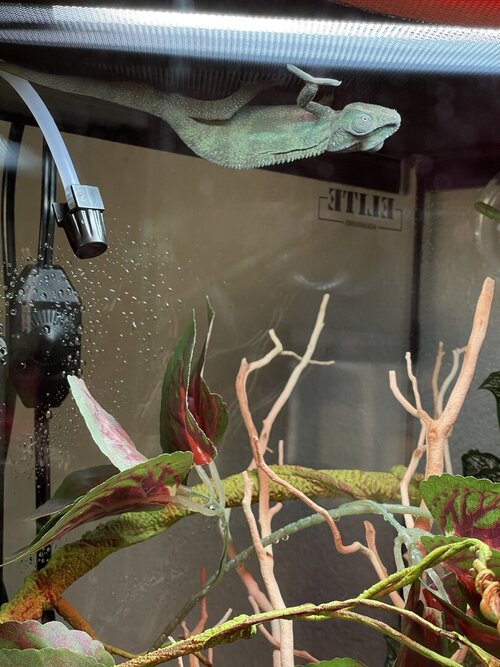 F2D2865E-732C-40A8-B445-6E7A0F7DD6B8.jpeg180.5 KB · Views: 240
F2D2865E-732C-40A8-B445-6E7A0F7DD6B8.jpeg180.5 KB · Views: 240 -
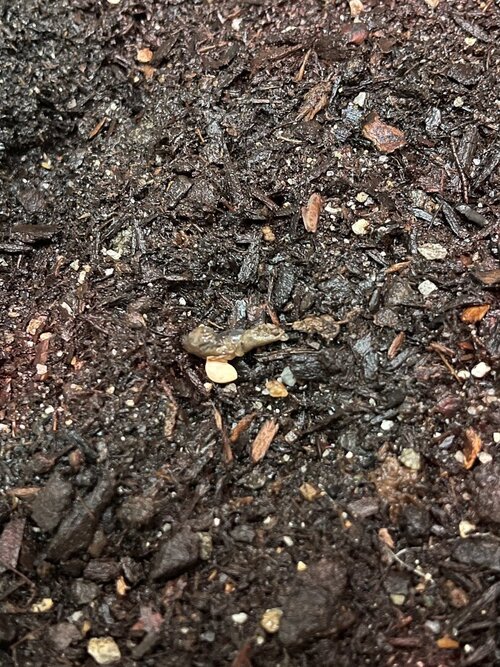 C9F3EF32-CB1F-4E93-9BEE-4F10B26967CA.jpeg332.4 KB · Views: 245
C9F3EF32-CB1F-4E93-9BEE-4F10B26967CA.jpeg332.4 KB · Views: 245 -
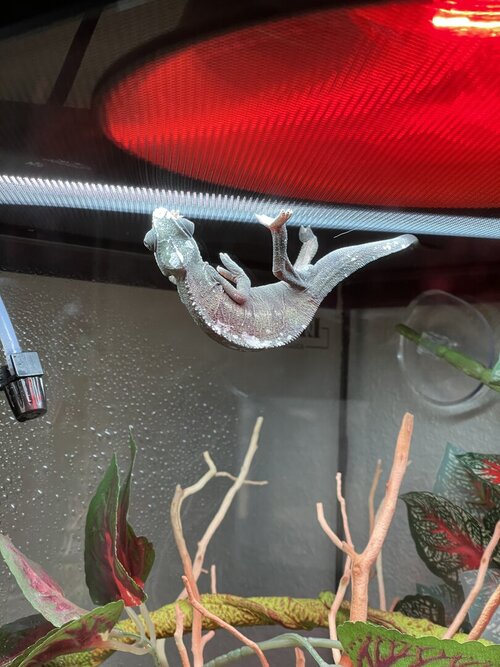 D124DE73-B137-47F9-9B8B-00955257456C.jpeg169.1 KB · Views: 232
D124DE73-B137-47F9-9B8B-00955257456C.jpeg169.1 KB · Views: 232 -
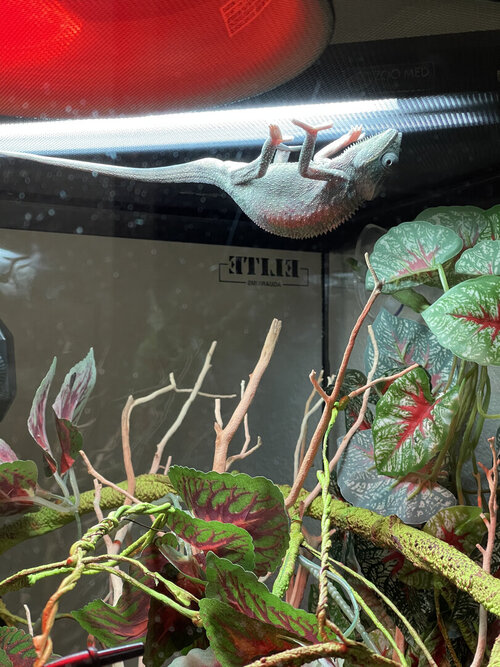 874A0E5D-ACAA-4B69-A60C-94AF573A0B0F.jpeg258.4 KB · Views: 245
874A0E5D-ACAA-4B69-A60C-94AF573A0B0F.jpeg258.4 KB · Views: 245

